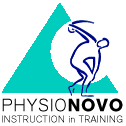Prevention
Effective primary prevention of musculoskeletal complaints starts at an early age. Good sports education in children and adolescents, adapted to the development process and motor learning ability of the individual child, is important to develop a positive attitude towards (intensive) physical activity.
In addition, emphasis should be placed on fun in sports, games, and movement. Fun in movement motivates and leads to (top) performance when needed.
Children with weaker joint functions, who are often less motivated and "don't like sports" are asked to put in above-average effort. Especially for them, fun in exercise is important. It is the responsibility of the sports and games leader to be aware of this and to act accordingly.
When the first musculoskeletal complaints or injuries occur, training adaptation is a priority to remedy them and prevent aggravation or recurrence. At the same time, it is then also experienced that professionally performed and correctly dosed motor activity can reduce or even eliminate pain. Thus, the fear of movement disappears, and the pleasure of moving returns. Only through such positive experiences can people be motivated to develop a lifelong active lifestyle.
With increasing age, the function of the skeleton and thus of the joints also decreases. Especially at this stage, exercise is important to maintain the load-bearing capacity of the joints of the back, arms and legs. After all, symptoms cannot always be avoided, but their occurrence can be significantly delayed and their intensity reduced. Exercise is thus an effective means of learning to deal with pain in such a way as to limit its disabling effect.
Periodic motor check-ups
For the teeth and for internal organs, regular preventive measures, reimbursed by health insurance, are widely recognized. For the largest organ, by contrast, the musculoskeletal system, there are no structural preventive measures at all. And while musculoskeletal complaints lead to a lot of suffering for those affected and they have enormous economic consequences. This is at least remarkable because regular preventive motor examinations can be easily performed and documented and are also cost-effective. A favorable additional factor is that regular examinations can motivate the person concerned to stay active or become active again.






